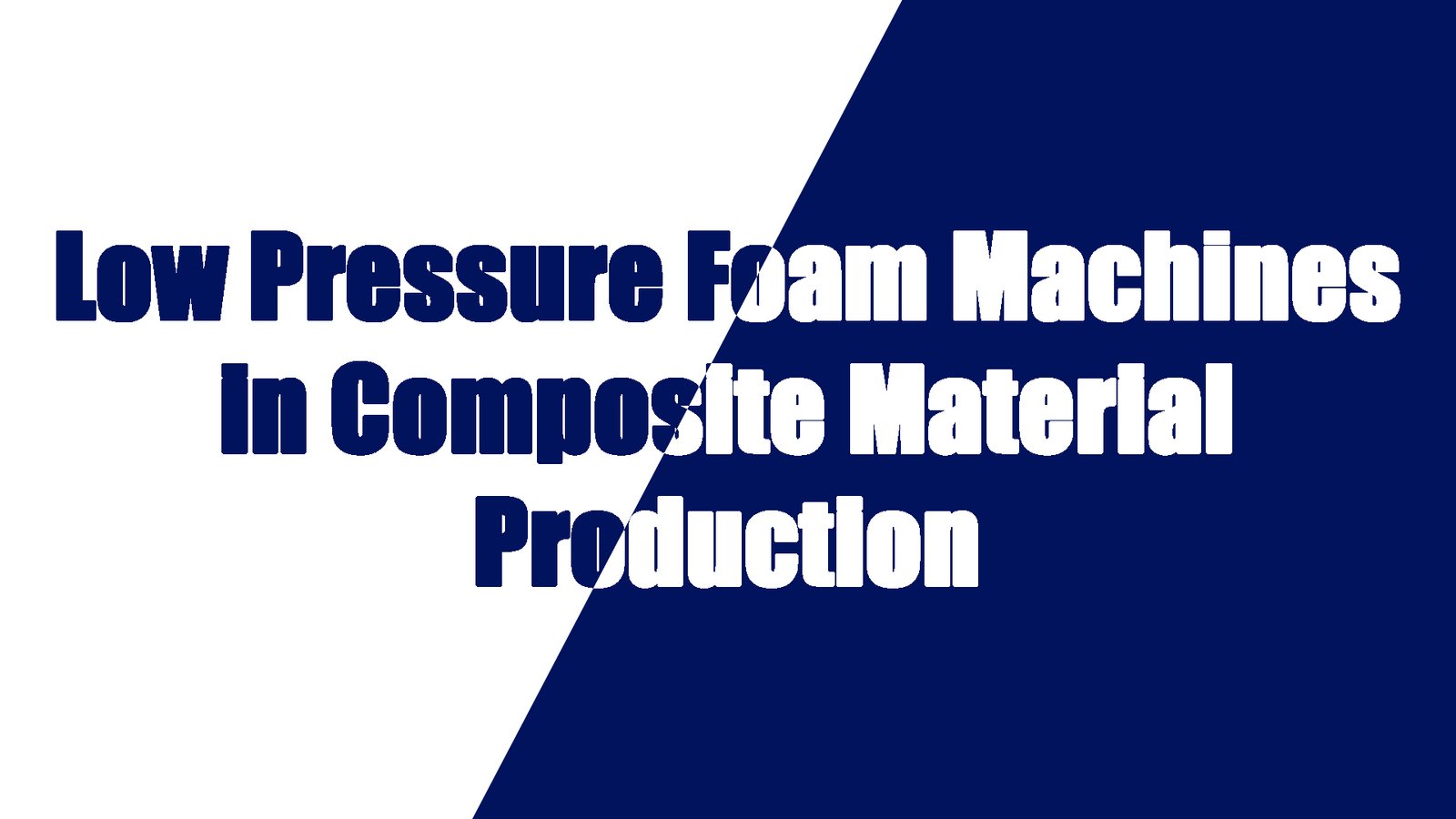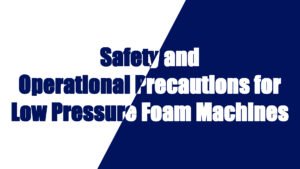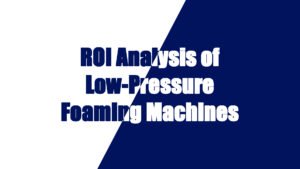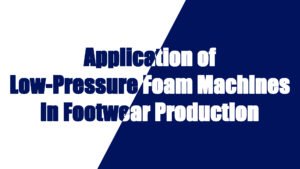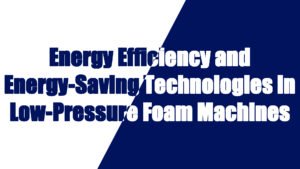In recent years, low pressure foaming machines have become increasingly essential in the production of composite materials such as foam plastics, sandwich panels, and composite boards. These materials are widely used across industries like construction, automotive, and packaging due to their superior strength-to-weight ratio. Low pressure foaming machines play a crucial role in manufacturing these advanced materials by improving material properties, enhancing strength, and reducing weight. This article will explore how low pressure foaming machines contribute to the production of composite materials and provide a detailed explanation of the production processes involved, highlighting the advantages of using low pressure equipment.
Role of Low Pressure Foaming Machines in Composite Material Production
Low pressure foaming machines are specifically designed to mix and inject polyurethane foam into various materials or molds, creating composite materials with enhanced properties. These machines provide precise control over foam mixing, injection pressure, and curing time, which significantly impacts the final product’s performance.
Strength Enhancement: One of the key benefits of using low pressure foaming machines in composite materials is the improved mechanical strength of the final product. The controlled application of foam ensures that the composite material maintains uniformity and consistency, resulting in high structural integrity. Foam injected into materials like sandwich panels adds an internal layer that strengthens the structure and helps distribute mechanical loads more efficiently.
Lightweight: Low pressure foaming also plays a vital role in reducing the weight of composite materials. By filling the interior of materials like foam plastics or sandwich panels with lightweight polyurethane foam, manufacturers can significantly reduce the overall weight without compromising on strength. This makes composite materials ideal for applications in the automotive and aerospace industries, where weight reduction is crucial for performance and energy efficiency.
Improved Thermal and Acoustic Insulation: Polyurethane foams, commonly used in low pressure foaming systems, offer excellent thermal and acoustic insulation properties. When used in composite materials, these foams help improve the overall insulation of the final product. This is especially important in the production of insulated panels, which are widely used in the construction industry for energy-efficient buildings.
Composite Material Production Process with Low Pressure Foaming Machines
Low pressure foaming machines are integral to the production of composite materials. Below is a step-by-step breakdown of how these machines are used in the production process:
Foam Preparation and Injection
The first step in the process is preparing the polyurethane foam. In a low pressure foaming system, two main components—polyol and isocyanate—are mixed in precise ratios. These components are then injected into the mold or the substrate material under low pressure, typically ranging from 2 to 10 bar, depending on the specific application.
- Automatic Mixing: Low pressure foaming machines are equipped with automated mixing systems that ensure accurate proportions of polyol and isocyanate. This guarantees a high-quality foam that meets the desired properties for the composite material, such as density, flexibility, and curing time.
- Foam Injection: Once the foam mixture is prepared, it is injected into molds or between layers of the composite material, such as in sandwich panel production. The low-pressure system helps control the foam’s expansion and flow, ensuring that the foam fills the mold evenly and efficiently.
Curing and Setting
After injection, the foam needs time to cure and harden to achieve its desired mechanical properties. The curing process depends on the foam formulation, temperature, and environmental conditions. Low pressure foaming systems provide precise control over curing time and temperature, which is essential for achieving the optimal performance of the composite material.
- Controlled Curing: The low pressure environment allows for controlled curing, which helps maintain the foam’s structural integrity. During the curing phase, the foam expands and bonds with the surrounding material, forming a solid and durable composite.
Composite Material Assembly
For composite materials like sandwich panels, the foam acts as the core material between two outer layers, such as metal, plastic, or fiberglass. The foam provides a lightweight, durable core that enhances the overall strength and insulation properties of the panel.
- Bonding Layers: The low pressure foaming machine ensures that the foam adheres effectively to the outer layers, forming a strong bond that prevents delamination. The result is a composite material that is both lightweight and strong, making it suitable for various applications like insulation panels and structural components.
- Customization: Low pressure foaming machines can be adjusted to produce foams with different densities, which allows manufacturers to tailor the material properties to specific requirements. Whether producing foam plastics, sandwich panels, or composite boards, the flexibility of low pressure equipment ensures that manufacturers can create materials with the desired strength, weight, and insulation properties.
Advantages of Using Low Pressure Foaming Machines in Composite Material Production
Cost Efficiency: Low pressure foaming machines are often more cost-effective than high pressure systems. They require less energy and can be operated with lower capital investment, making them a viable option for businesses looking to optimize their production costs while maintaining high-quality output.
Precision and Control: The low pressure environment allows for precise control over foam injection, mixing ratios, and curing times. This ensures that the final composite material has consistent properties, improving the quality and performance of the product.
Reduced Waste: Since low pressure foaming machines offer precise material control, there is less foam wastage during production. This leads to higher material efficiency and reduced production costs.
Environmentally Friendly: Low pressure foaming machines often use less energy and produce fewer emissions compared to high pressure systems. Additionally, the use of polyurethane foam helps in creating lightweight, energy-efficient products that contribute to sustainability in industries like construction and automotive manufacturing.
Applications of Low Pressure Foaming in Composite Materials
Low pressure foaming machines are widely used in the production of various composite materials, including:
Sandwich Panels: These panels consist of a lightweight foam core sandwiched between two durable outer layers. They are commonly used in construction for building insulation and in the automotive industry for lightweight panels.
Composite Boards: Used in furniture, flooring, and construction, composite boards made with low pressure foaming offer superior strength and lightness, making them ideal for a wide range of applications.
Foam Plastics: Low pressure foaming machines are also used to create foam plastics that are lightweight, durable, and resistant to impact. These materials are widely used in packaging, insulation, and automotive applications.
Marine and Aerospace Applications: In industries like aerospace and marine, lightweight and high-strength composite materials are critical. Low pressure foaming machines enable the production of materials that meet these stringent requirements, contributing to fuel efficiency and performance.
Low pressure foaming machines play a pivotal role in the production of composite materials, improving their strength, reducing their weight, and enhancing their insulation properties. Whether used in the production of foam plastics, sandwich panels, or composite boards, these machines provide significant advantages, including cost efficiency, precision, and environmental friendliness. By offering controlled foam injection, automatic mixing, and customizable foam properties, low pressure foaming machines enable manufacturers to produce high-quality composite materials that meet diverse industry needs. For businesses looking to optimize their production processes and enhance material performance, investing in low pressure foaming technology is a smart choice that can lead to significant long-term benefits.


















